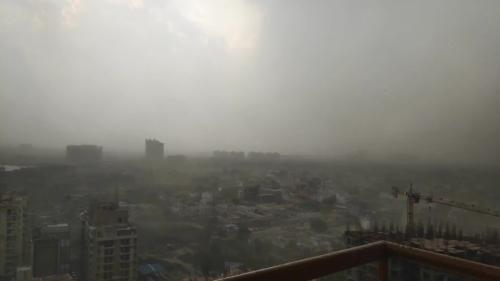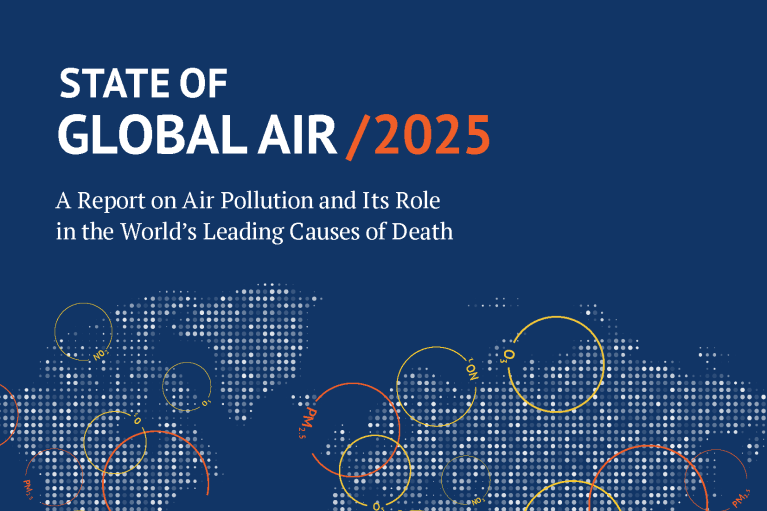
South Asia — home to 2 billion people — faces common threats of air pollution and climate change, with significant implications for the health and well-being of its residents. For instance, South Asia has experienced a significant increase in heat waves, with five consecutive heat wave periods lasting about 35 days each during late February and April 2022. Cities including Delhi, Lahore, and Dhaka are facing heightened challenges due to air pollution, leading to a surge in respiratory and cardiovascular health effects among residents. In addition, climate change–induced glacial retreat in the Himalayan region, affecting countries like Nepal and Bhutan, has led to water scarcity and increased risks of glacial lake outburst floods. Thus, urgent strategic actions are vital to address the escalating climate risks affecting millions of people across the region.
Here, we discuss key gaps and opportunities for local and regional action on air pollution and climate change in the context of South Asia.

Dust storm in Ghaziabad, Delhi National Capital Region, India on April 30, 2020. Credit: Abinaya Sekar
Co-benefits of Addressing Air Pollution and Climate Change
In South Asia, common sources contribute significantly to air pollution and greenhouse gas emissions, such as transportation, energy production, solid fuel combustion for cooking and heating, small industries like brick kilns, and burning of agricultural and household waste, among others. Developing strategies to jointly address greenhouse gas emissions and air pollutants can result in significant health benefits. The first step, of course, is identification of the common sources of air pollutants and greenhouse gases and their spatiotemporal variations. One way to do this is through the development of regional emission inventories.
An emission inventory provides information to understand anthropogenic emissions sources and trends. However, its accuracy depends on the methodology and quality of data used. Emission inventories currently differ in magnitude, resolution, coverage, and sector-specific details, highlighting persistent data gaps. At the regional level, establishing a unified emission inventory for South Asia can be a helpful first step because existing inventories are incomplete or out of date. Leveraging such data to inform decision-making can significantly increase the effectiveness of mitigation strategies, paving the way for a cleaner, greener South Asia.
Promoting Research and Local Interventions
Extreme heat is a salient example of health effects due to climate change and air pollution. Across South Asia, extreme heat is expected to influence people’s health in coming years. Yet, there is limited health data (including underreported heat-related deaths), resulting in an inadequate understanding of heat-related illnesses and the interactive effects of poor air quality and extreme heat. Moreover, institutional structures within the public health sector currently lack effectiveness in implementing heat mitigation strategies, including significant technical and financial constraints. Limited collaborations with research institutions or civil society organizations further widen these gaps.
To tackle future challenges, decentralization of decision-making is crucial and can help foster faster and more effective implementation. However, this will require synthesizing and strengthening region-specific research as well as bolstering the capacity of local officials and the development of strategies for robust collection of, and access to, health data. Filling knowledge gaps is essential; fostering a collaborative ecosystem with partnerships — including public health bodies, researchers, and civil society organizations — can provide localized insights with potential impact on policy. For example, in India, the National Programme on Climate Change and Human Health presently addresses air pollution, heat, extreme weather events, and resilient healthcare infrastructure and in the future will deal with more climate-sensitive health outcomes. Medical surveillance systems for air pollution-related illnesses and heat-related issues have been established, enhancing early warning capabilities. Efforts to integrate local knowledge and data are also underway through state-level action plans on climate change and human health developed under the Programme. While the Programme can continue to be strengthened, it offers an example for other countries in the region looking to implement similar initiatives.
Strengthening Technical and Institutional Capacity in the Region
Technical and institutional capacity remains a key bottleneck in addressing the dual challenges of climate and air quality. For instance, despite significant environmental and public health challenges, the number of universities offering public health programs falls significantly short of addressing the needs across the region. According to one estimate, only 73 institutions offer a master’s degree in public health in India. The lack of trained human resources across the region is probably the single biggest challenge. Urgent investment in educational programs and infrastructure is necessary for generating relevant health evidence, training the next generation’s job force, and supporting policies that promote better health for all.
Opportunities for improvement include partnerships between institutions across the global north and south and transdisciplinary collaborations, including those between medical and engineering colleges and among arts, humanities, and management schools. Another opportunity involves careful consideration of resource allocation. For instance, India has started surveillance for air pollution-related illnesses at the district level. While this is a remarkable step forward, financial constraints often result in a lack of staff capacity and
infrastructure to undertake the activity. Thus, in developing such systems, it is crucial that resource allocation is appropriate and adequate and is directed toward activities that focus on building local data infrastructure. This is also an area where both government and private funders can play a role.
Paving the Way Forward
Considering the gaps identified above, it is evident that there are ample opportunities for various interested parties to contribute. Regulators can prioritize the collection of and access to health and emissions data, fostering intersectoral collaborations, empowering local governments for decentralized decision-making, and enhancing collaboration with a broad range of institutions. Researchers can support research development that is responsive to local policy needs. Academic institutions, researchers, and regulators can work together on capacity strengthening initiatives for researchers as well as local and national policymakers. Lastly, funders and philanthropies have a significant role to play by focusing on the opportunities and supporting the development of essential infrastructure in South Asia to ensure better health for all.
Note: This blog summarizes insights from the session entitled "Evidence, implications, and collaborative opportunities in the context of climate change, air quality, and health" held at the CAFÉ Climate and Health Conference 2024. Speakers included Dr. Kaleem Anwar Mir, Global Climate Change Impact Studies Centre, Pakistan; Mr. Aditya V. Pillai, Sustainable Futures Collaborative, India; Dr. Aakash Srivastava, National Centre for Disease Control, India; and Dr. Kalpana Balakrishnan, Sri Ramachandra Institute of Higher Education and Research, India. The session was moderated by Dr. Pallavi Pant, Health Effects Institute, United States and Dr. Sagnik Dey, Indian Institute of Technology Delhi, India.


